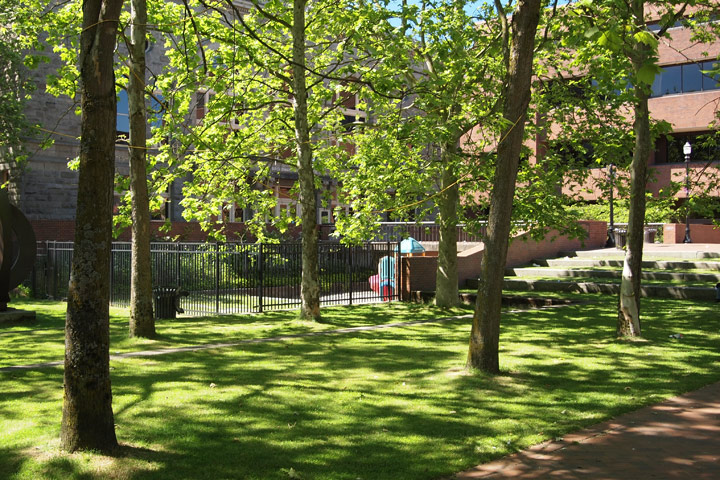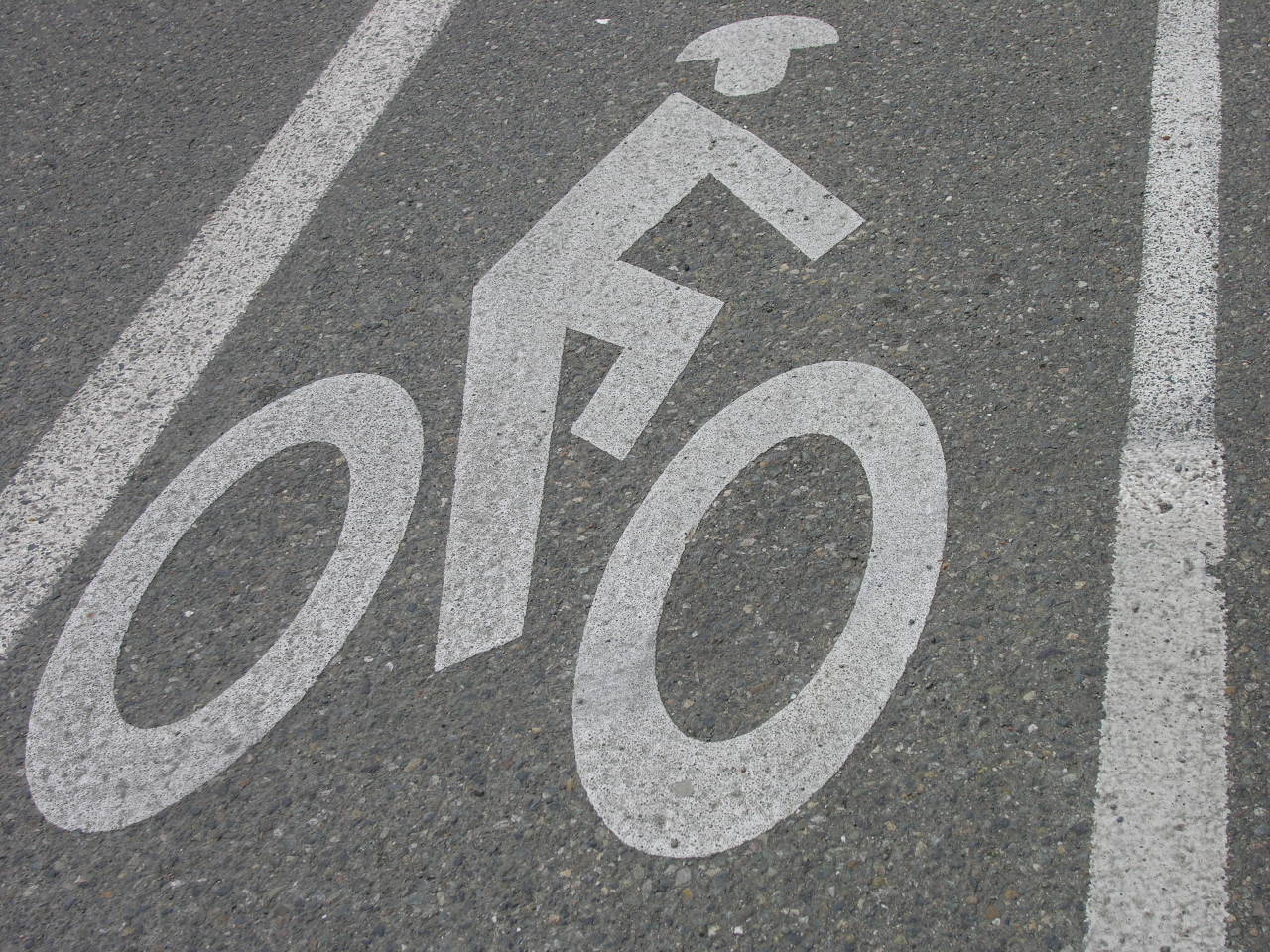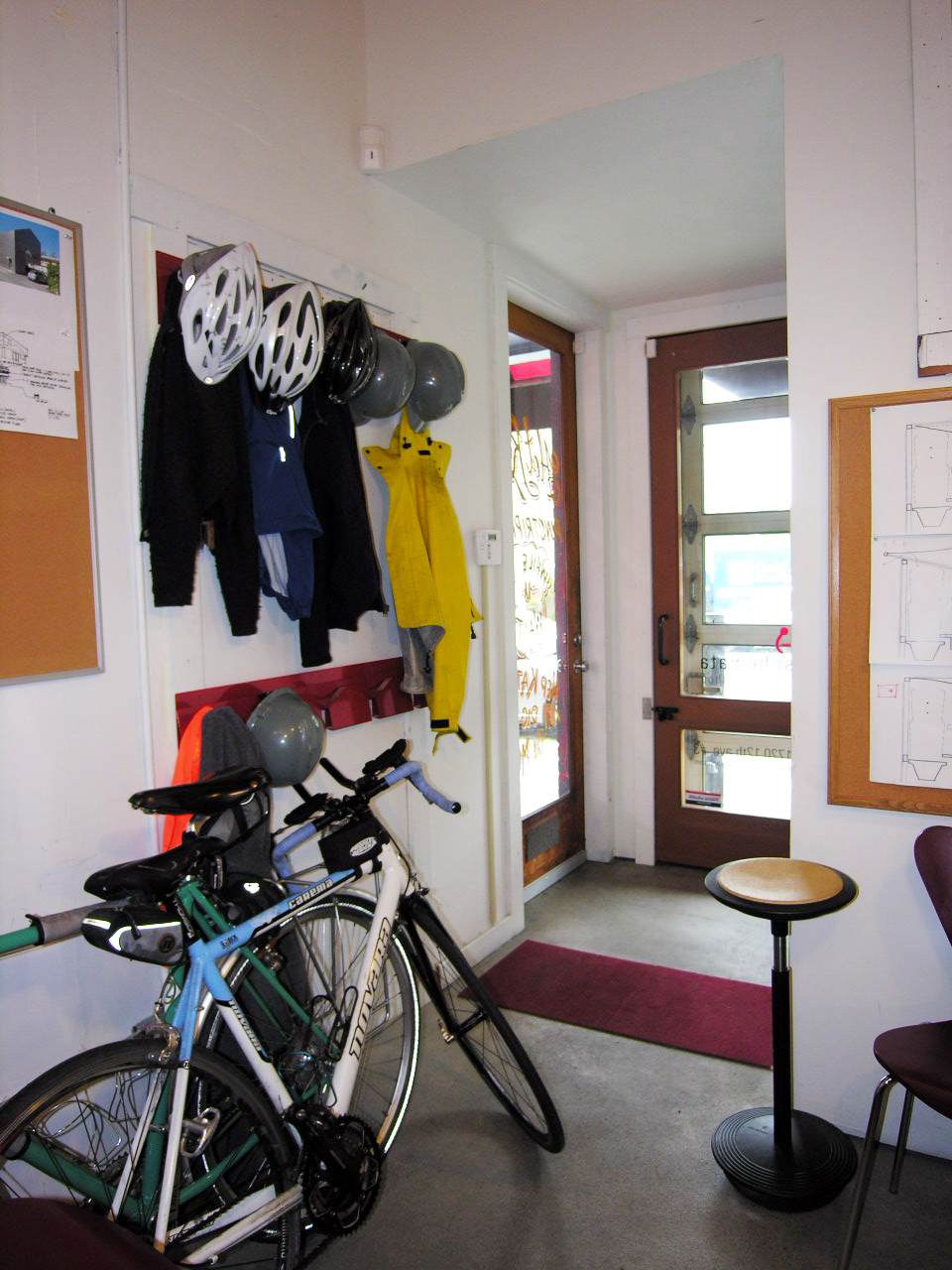Design of successful public landscapes is a difficult endeavor. Despite the use of good materials and beautiful plantings, and careful execution, there is one key component that can only happen (if one is fortunate) until after all other efforts have been completed: the peopling of the outcome. For unlike buildings, which have a program guaranteeing that they will at least be used — if not loved — by the public, participation in landscapes is largely voluntary, as landscapes do not have as thorough a set of programmatic requirements (if any) as do buildings. ‘Build it and they will come’ may work for buildings, but not for landscapes. Landscapes, therefore, require a conceptual order outside the confines of the landscape itself, one that artfully blends utility, beauty, and cultural/social relevancy in order to be inviting. Absent that balance, even the lushest landscape would pass underappreciated and underutilized, and therefore largely unsuccessful. Case in point: Seattle Central Community College’s lovely – but largely unsuccessful – garden-plaza landscape at the intersection of Broadway and Pine Streets, the first of the Two Spaces. Despite having several great attributes (as described below) it is a space that is used only part-time, and typically only when SCCC classes are in session. Part-time success is not be bad per se, except that the landscape in question happens to be at one Broadway’s most important crossroads, and one that needs full-time use, full-time activity. Full-time occupancy.
[caption id="attachment_2083" align="aligncenter" width="720" caption="The Pine and Broadway Entrance"][/caption]
As the photos herein depict, the garden-plaza is a surprisingly pleasant landscape, both nicely planted and well sculpted, as well as being a classically modernist design. The London Plane trees (its most immediately recognizable feature) are a traditional favorite throughout North America and Europe, and were specifically bred to achieve urban heartiness — making them a great choice for this location. The visual interest of their exfoliating bark and the dazzling light and shadow portrayed by their canopy is seldom bettered by any other tree, and the well-defined planting rows (allées) could not be more appropriate or truer to the tree’s artistic attributes and centuries-long distinguished service. At SCCC, they live up to their heritage.
[caption id="attachment_2086" align="aligncenter" width="720" caption="Interior View Looking West"][/caption]
Topographical relief (changes in grade) is effectively utilized in the garden-plaza and provides nice seating-steps composed of both hardscape and turf. The stepping defines a sheltered place, a refuge, which combined with the shade trees to provides relief from the busy intersection and adjacent streets. Concentrically arranged, the seating-steps focus on a bronze sculpture and a children’s play area.
[caption id="attachment_2087" align="aligncenter" width="720" caption="View Looking East, Towards Broadway"][/caption]
A robust, rusticated wall neatly defines the landscape’s perimeter to the south and west, its materiality deftly reflecting that of the Broadway Performance Hall, just to the north (the wall was originally part of the buildings base, when it sat on the corner, prior to its being moved to its current location). On an opposite corner of the site, and at grade, wide entries welcome passersby into the landscape, and into the College, beyond. As aforementioned, sculptures (of varying levels of quality), pepper the landscape, creating points of visual interest, while another stepped-seating of turf and hardscape provides another prospect on the site northeast corner. So far, so good.
[caption id="attachment_2088" align="aligncenter" width="720" caption="View Looking North, Towards the Broadway Theater"][/caption]
As so often happens, however, the sum is lesser than of its parts; for, despite all of these apparently good qualities (taken individually), the space is a largely a failure because it is introverted and self-absorbed. Again, this would not be a bad thing, except it is adjacent to an important Capitol Hill crossroads. It is not inviting to passersby nor is it a strong landmark, two qualities it should have given its prominent location. Its relationship to its context is muddy, and in fact it denies connection to much of its surroundings. It is a public landscape by ownership only, not by perception or use.
[caption id="attachment_2090" align="aligncenter" width="720" caption="Bus Shelter and Landscape Wall Along Pine"][/caption]
The first problem with the design — if I were to order them — is the robust, architecturally appropriate wall, mentioned above. Too robust, it turns out. Too tall. Too long in its unbroken southern and western lengths, making it too daunting to surmount and gain entrance into the niceties described above. Below, one sees the rather abrupt (and frequent) edge the wall defines. Hundreds of linear feet, I dare say, and cliff-like for more than a few of dozen of them. And what of its dutiful retention of the turf, so true to the wall’s being? Alas, it is, but too much of a burden to bear as witnessed by the diminutive Metro bus patrons (above) awaiting the 3:17 and dwarfed by, you guessed it — too much retained earth — a few too many ‘toos’, I’m afraid.
[caption id="attachment_2091" align="aligncenter" width="720" caption="The Southwest Corner Cliff"][/caption]
The inaccessibility delimited by the walls and grade challenges create an isolated space, an isolation furthered by the above mentioned stepped-seating, which also happens to focus inwardly. Conceptually, a contemplative space is not a bad thing, but as it focuses onto things that are not visible from the surrounding streets, it loses the opportunity to pique the passerby’s interest and tempt entry, and populate the space. And the object of the focus: a gated playground. The playground part is fine, just not the gated part. More isolation. Less inclusive. And again, not the quality for a space at one of the most important intersections on the Hill.
[caption id="attachment_2089" align="aligncenter" width="720" caption="The Vacancy of Broadway along the College's Main Facades"][/caption]
On the opposite end of the too defined, too isolated spectrum of design – (both geographically and spatially) is a space of too little definition. Yes, many of us are aware of the expansive sidewalk betwixt SCCC and Broadway (another design issue, to tackle another day). Not only does the expansive sidewalk damage SCCC’s frontage along Broadway, but it provides too little definition – containment – for the garden-plaza’s northeast boundary. Unlike the overly defined and inaccessible southern and western walled edges, the northeast corner spills out into a space that itself is spilling out. Double spillage? What a mess. An easy and understandable transition from one space to another is generally a positive thing in landscape, but in this case the sheer size of the Broadway sidewalk sucks the energy, the place-ness, right out of the landscape in question, and scatter-shoots it along the void that is south Broadway.
[caption id="attachment_2092" align="aligncenter" width="720" caption="And the People go on Forever . . ."][/caption]
By contrast, a mere half block away, on the same sunny, 4th of July afternoon, we have another landscape (the second of our ‘two spaces’) that is almost over-burdened by its success: the Bobby Morris Playfield. “Unfair”, “cheap shot”, some would say. “It is a different space, for different needs.” “It has a program –that designer’s crutch.” Correct the nay-sayers are, but that misses the point. Despite its quality components and its different intentions from the Playfield, SCCC’s garden-plaza does lack the niceties of program, but it more importantly lacks the most important component of any public landscape — people — which Bobby Morris has in abundance. Even participants in landscapes of repose benefit from at least a few other users near by. Keeps the space, well, public.
Sunshine . . . that’s what the folks in the Playfield wanted! Sun and action. That is why the Playfield has people, and the SCCC landscape does not. What if the blazing sunlight and programmatic crutch of the playfield were snatched away? Would the Playfield still attract people? Hmm? Well, it would, and it did, for not quite five minutes later and 200 yards to the north, I took the photo below. In the shade. No action. Just folks relaxing. Much as they would do if they were in the SCCC garden-plaza — that is if the SCCC landscape functioned as it should and attracted them.
[caption id="attachment_2093" align="aligncenter" width="720" caption="Made in the Shade . . . ."][/caption]
So, what to do with this under-performing landscape, located at a key Capitol Hill intersection and gateway to SCCC — tear it down and build on it. “What an architect” some would cry. Destroy a lovely landscape, and put a building there. Well, say I, I would rather spend my entire day at Volunteer Park, Cal Anderson Park, or Bobby Morris than any building on Capitol Hill, so my suggestions are not from my dark, egotistical architect’s perspective, but from a lover of public landscapes. The Broadway and Pine intersection needs the kind of strong, spatial definition provided by a building, not the vacancy provided by an underperforming landscape. And given the types of shortcomings described above, renovation is not an option.
So, let us consider replacing the lovely — but woefully underperforming — garden-plaza in its entirety, with a new hybrid-use type of SCCC building and a new, contextually relevant landscape plaza. Hybrid-use I say? Yes, for this site (and all future SCCC sites) should foster a dynamic, integrated engagement with the larger Capitol Hill community. A hybrid-use building and landscape would have, among other things, 24-hour, active uses, a transparent ground floor, and recognition and enhancement of its key location on the Hill, as well as uses outside of SCCC’s traditional educational-only ones. This hybrid-use building and landscape would provide the kind of 24 hour peopling needed (by all Hill residents) for this most important site. A tall order for an institution with a mixed history of building on the Hill, and one that will require a change of approach on their part and strong support from the community on ours; however, there is new leadership at the College, and with it new perspectives that may help achieve redefined and shared goals.



























 [/caption]
[/caption]









